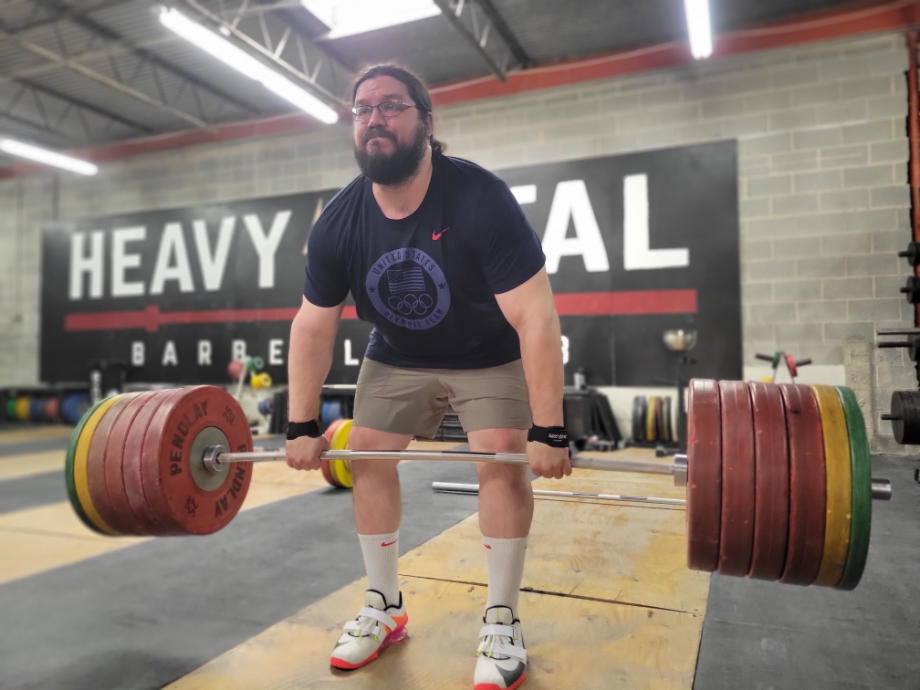We test and review fitness products based on an independent, multi-point methodology. If you use our links to purchase something, we may earn a commission. Read our disclosures.
Few exercises target as many muscle groups as the tried-and-true barbell deadlift—a fundamental exercise on par with the bench press, squats, and pull-ups—but that doesn’t mean you need to deadlift every week until you’re bored stiff.
To clarify, you don’t have to do the regular deadlift each week because—let’s face it—there are more deadlift variations out there than you could shake a barbell at. Sprinkling some variety into your strength training not only staves off the boredom but may enhance your overall results.
So, we’re tackling the stiff-leg deadlift, a deadlift variation that involves performing the deadlift with your legs straight and stiff. The result? Pure hip isolation to help you build strength and power in your posterior chain.
Kate Meier, NASM-CPT, USAW-L1, CF-L1, and GGR director of fitness content, shares how to do the stiff-leg deadlift with proper form, as well as variations, alternatives, benefits, and more. Check it out!
How To Do the Stiff-Leg Deadlift
“The setup and movement pattern for the stiff-leg deadlift is nearly identical to the regular deadlift,” says Kate. “The primary difference is in the knees. You bend your knees in the starting position of your regular deadlift, but keep your knees almost fully extended from start to finish with the stiff-leg deadlift.”
How to do it:
- Stand over a loaded barbell with your feet shoulder-width apart.
- Hinge forward to reach down and grip the barbell using a mixed grip or overhand grip. Keep your back straight, core tight, and knees fully extended except for a slight bend.
- Drive through your heels and bring your hips forward to stand.
- Squeeze your glutes at the top, then slowly return the bar to the floor.
- Reset and repeat for reps.
RELATED: Best Olympic Barbell
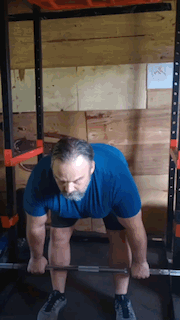
Modifications
- Dial it back: The stiff-leg deadlift emphasizes the muscles in your lower back and hips, which you may not be prepared for. If you’re struggling, start with the regular deadlift to build a stronger foundation and supplement with hip hinge exercises like the good morning.
- Make it harder: Adding more weight, imposing a tempo, lifting at a deficit to increase the exercise’s range of motion, or converting your regular stiff-leg deadlift into a single-leg deadlift are all ways to ramp up the challenge if things get too monotonous.
How To Do the Stiff-Leg Deadlift At Home
No barbell? No problem! You can still get your deadlifts done at home with other free weights, like dumbbells or kettlebells, or even heavy household objects, like jugs of detergent and baskets of laundry. Just make sure you’re lifting with good form and keeping your legs stiff!
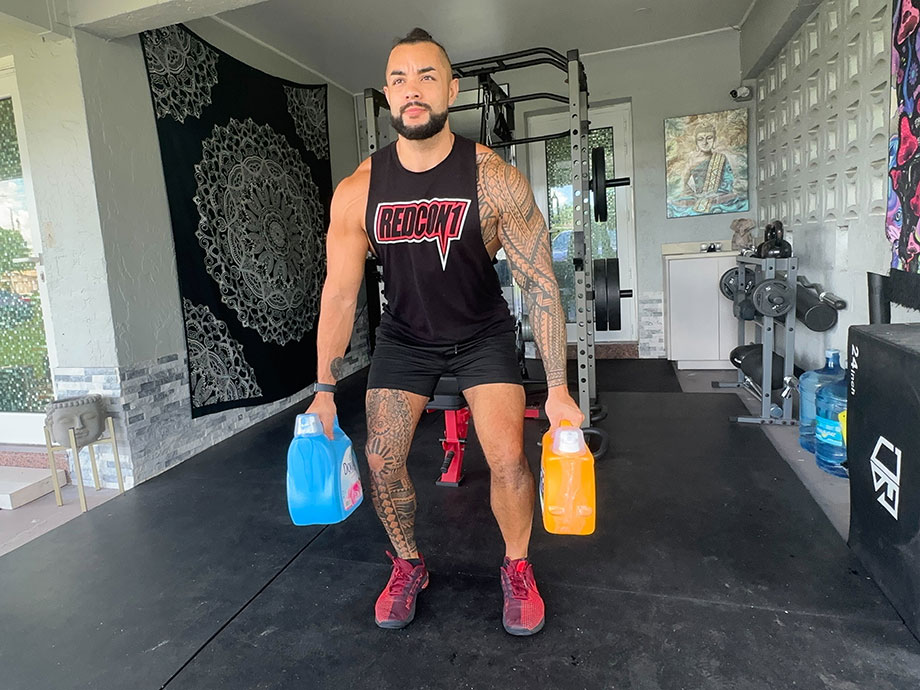
Stiff-Leg Deadlift Variations
- Stiff-leg dumbbell deadlift: Using a pair of the best dumbbells instead of the barbell means greater flexibility, mobility, and range of motion. The downside is that most lifters can’t lift as heavy when using dumbbells versus barbells.
- Single-leg deadlift: Doing your deadlifts one leg at a time poses an added balance challenge but also lets you correct muscle imbalances by training each side equally.
- Kettlebell stiff-leg deadlift: Performing your stiff-leg deadlifts with kettlebells allows you to lift with a neutral grip, similar to a trap-bar deadlift, to reduce the stress on your lower back and grip strength. You also may choose to use two kettlebells held at your sides or one heavy kettlebell held dead center in front of your midline.
- Sumo stiff-leg deadlift: Getting into your sumo stance reduces the range of motion, making the movement more manageable while increasing your loading potential. You don’t have to wear a mawashi, but you may consider buckling a lifting belt.
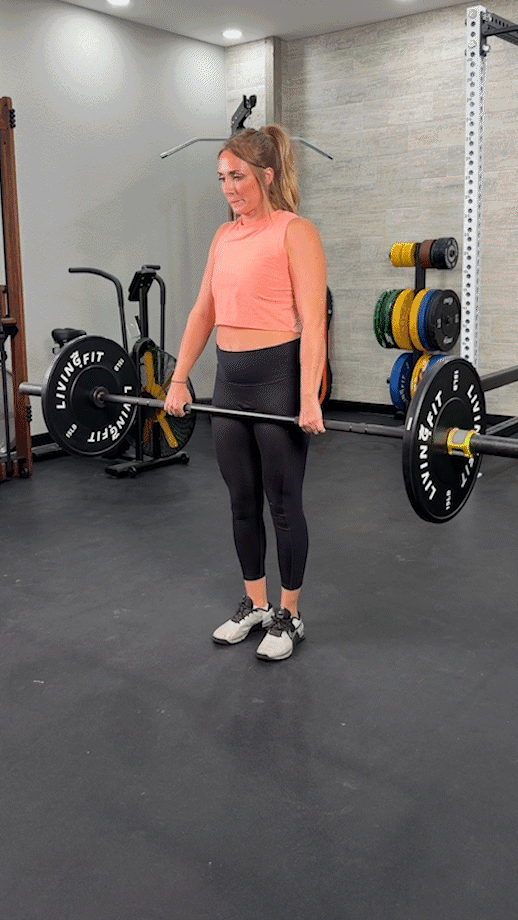
Stiff-Leg Deadlift Alternatives
You’ll be doing yourself a world of good by alternating between the deadlift, stiff-leg deadlift, and other deadlift variations. But plenty of exercises with similar movement patterns can also be a welcome addition to your strength training program.
Here are a few of our favorite stiff-leg deadlift alternatives.
Romanian Deadlift
Why do it: The Romanian deadlift and stiff-leg deadlift are similar in that both involve lifting with straight legs, but for the stiff-leg deadlift, you’ll lift from the floor while the RDL starts from a standing position. According to the Journal of Strength and Conditioning1, the RDL is one of the best hamstring exercises available.
How to do it:
- Stand with your feet shoulder-width apart and a loaded barbell held in front of you.
- Hinge forward, keeping your arms and legs extended, to lower the bar toward the floor.
- Continue until you feel a stretch in your hamstrings, then pause briefly.
- Drive through your heels and extend your hips to stand, squeezing your glutes at the top
- Reset, and repeat for reps.
RELATED: Romanian Deadlift Vs Deadlift
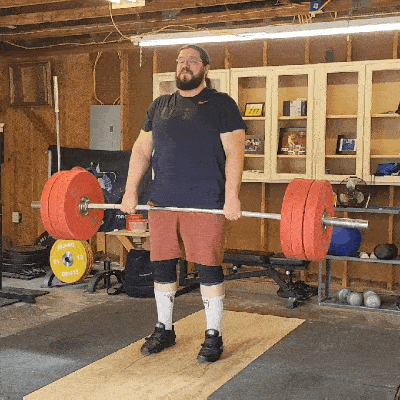
Glute Bridge
Why do it: “Glute bridges are a beginner-friendly alternative for those who may find the deadlift daunting,” says Kate Meier, NASM-CPT, USAW-L1, CF-L1. “They help you get accustomed to extending your hips, build posterior chain muscles like the glutes, hamstrings, and erector spinae, and involve minimal equipment.”
How to do it:
- Lie supine (face up) on one of the best exercise mats with your feet firmly planted, knees bent, and arms extended at your sides with your palms down.
- Press your feet and palms into the floor, tighten your core, and extend your hips upward toward the ceiling.
- Squeeze your glutes at the top and pause.
- Release and return to the starting position.
- Repeat for reps.
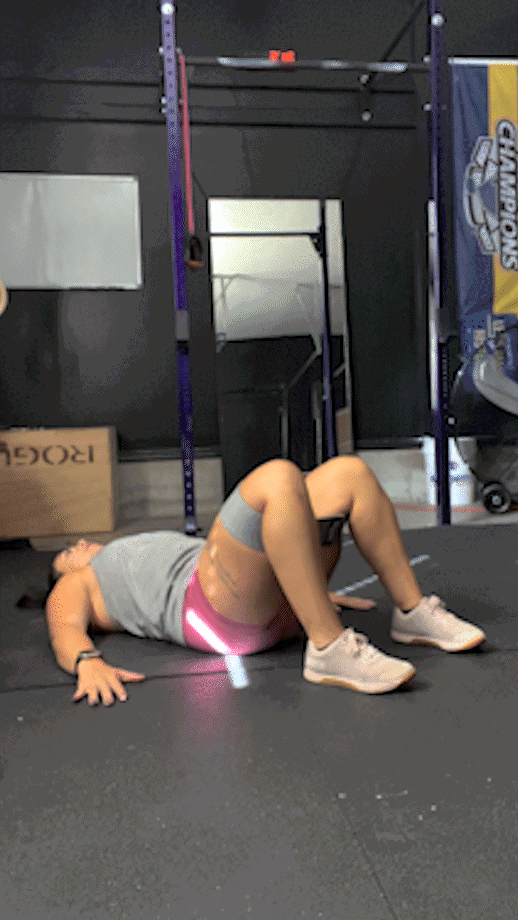
Good Morning
Why do it: The good morning exercise is another beginner-friendly movement that hits the same target muscles as the straight-leg deadlift. Like the glute bridge, it’s easy to learn, helps you get comfortable with the hip hinge, and can be performed using free weights or just your body weight.
How to do it:
- Stand with your feet shoulder-width apart and a slight knee bend.
- Hinge forward, keeping your legs nearly fully extended, back straight, and core tight.
- Continue until your chest is nearly parallel with the floor. You will feel a strong stretch in your hamstrings.
- Pause, then reverse the movement to return to the starting position.
- Repeat for reps.
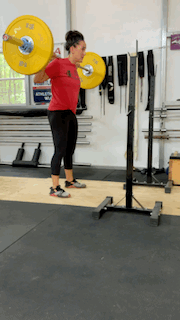
Stability Ball Leg Curl
Why do it: The stability ball leg curl lets you have a ball (literally) as you work the lower body muscles, including your hamstrings, calves, glutes, and core. They promote improved strength, mobility, and flexibility, making them useful as a warm-up and supplemental exercise to increase your deadlift and overall weightlifting performance.
How to do it:
- Lie supine (face up) on an exercise mat with your arms extended at your sides and your heels and calves resting on a stability/exercise ball.
- Tighten your core and glutes and raise your hips off the floor.
- Pull the ball toward you using your heels and bending your knees as the ball rolls closer.
- Pause, then straighten your legs to roll the ball back toward the starting position.
- Reset and repeat for reps.
RELATED: 12 Stability Ball Exercises
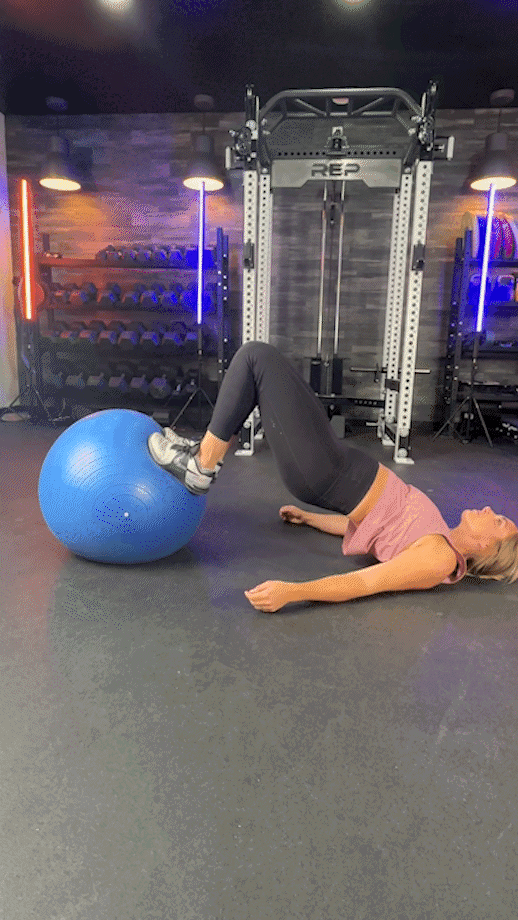
Benefits of the Stiff-Leg Deadlift
The deadlift is one of the undisputed greats, but how does the stiff-leg deadlift stack up? What benefits should you expect from working the SLDL into your strength training rotation?
Greater Emphasis on Your Lower Back and Hamstrings
“Eliminating the knee flexion from the standard deadlift movement pattern shifts the emphasis off of the quads and onto the hamstrings and lower back muscles,” says Kate Meier, NASM-CPT, USAW-L1, CF-L1. “Excellent if you’re looking to build your posterior chain muscles and develop a stronger hip hinge.”
According to the International Journal of Environmental Research and Public Health2, the stiff-leg deadlift also produces plenty of muscle activation in the glutes, meaning it makes a worthy addition to your workout routine if you’re looking to enhance your deadlift performance and build an overall stronger posterior chain.
Adds Exercise Diversity to Your Training Program
There are athletes, bodybuilding and powerlifting competitors, weekend warriors, and other fit folks out there that perform the same workouts every week, eat the same meals, go to bed at the same time each night, otherwise keep a strict schedule, and they’re happy!
No judgment; we’re super stoked for those who can slip into a solid routine and keep consistent, but that’s not how everyone is. The rest of us need a little je ne sais quoi to keep us from going mad, so crossing the standard deadlift off your schedule and working in variations like the stiff-leg deadlift is one of the many ways to stay sane while training.
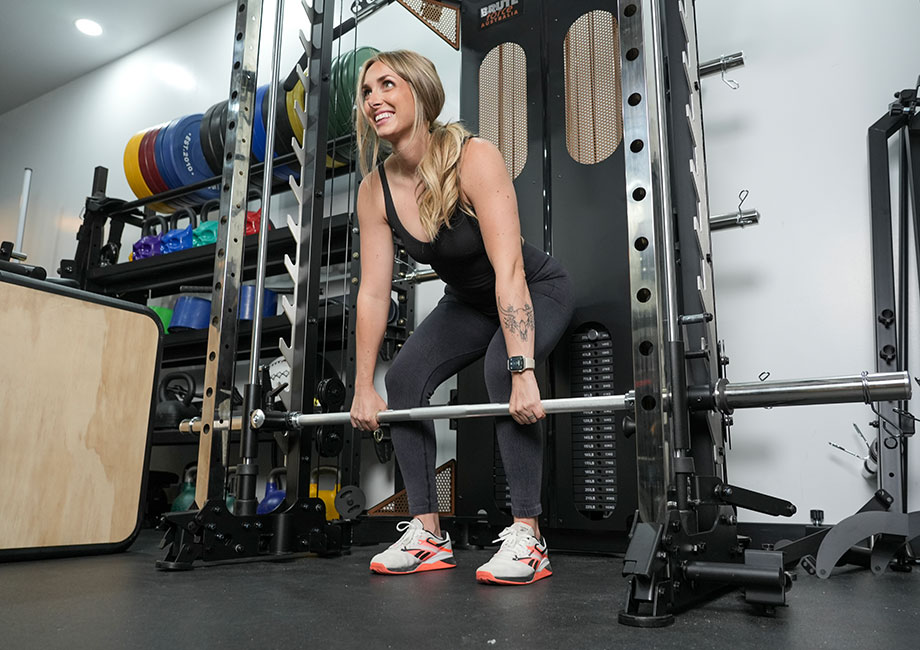
That’s not all; according to PLoS One3, “Varying [the] exercise selection had a positive effect on enhancing motivation to train…while eliciting similar improvements in muscular adaptations.” So, it’s not only good for your mental health, but you may get better results.
May Help Improve Low Back Pain
According to the World Health Organization4, low back pain is the leading cause of global disability, leaving hundreds of millions of people each year looking for relief.
According to the Journal of Sport Rehabilitation5, performing the deadlift and deadlift variations like the stiff-leg deadlift may alleviate low back pain by strengthening lumbar extension strength. The 2021 study states, “Exercise programs that include deadlifts are a clinically effective option for the treatment of low back pain for both pain scores and functional outcome measures.”
If you’re one of the many people dealing with low back pain each day, consult your doctor or other qualified medical professional to find out if deadlifts and other strength training programs designed to improve lumbar extension strength may be right for you.
Common Stiff-Leg Deadlift Mistakes
You may have a leg up on learning the stiff-leg deadlift if you’re already a deadlift pro, but there are still many mistakes to look out for when fine-tuning your form. Here are some common mistakes to avoid when doing stiff-leg deadlifts.
Hyperextending Your Knees
Fitness often teaches us that too much of a good thing is actually a bad thing. Such is the case with the stiff-leg deadlift because (yes) there’s such a thing as being too stiff with this exercise.
“Locking out your knees when performing repetitions of the deadlift places stress on your knee joint and puts you at risk of injury, including hyperextension and dislocation,” says Kate. “You should always incorporate a slight bend even though it’s called the stiff-leg deadlift.”
Likewise, bending your knees too much turns your SLDL back into the regular ol’ DL, which isn’t necessarily bad but does defeat the purpose.
Shrugging Your Shoulders
Just because it’s leg day doesn’t mean we can totally ignore what our upper body is doing. After all, you still need your upper body strong and engaged to maintain good posture and optimize your movement mechanics. So, let’s talk about your shoulders.
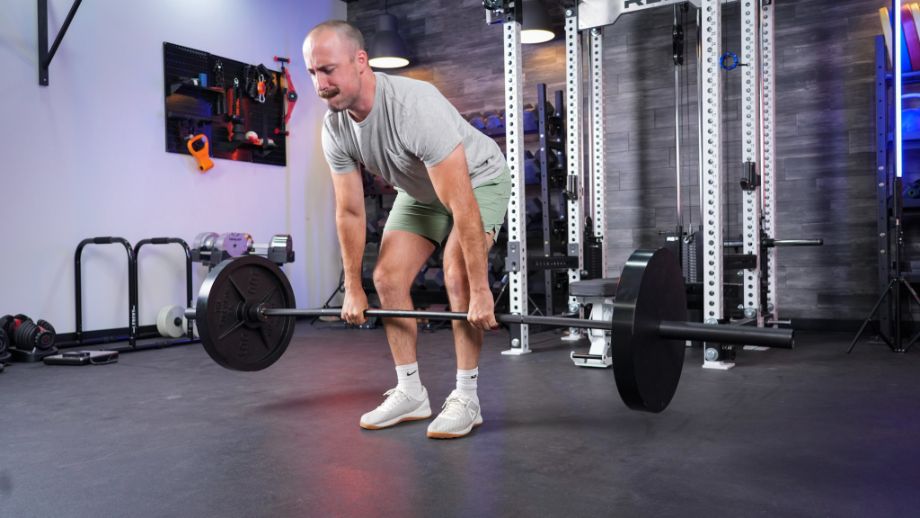
“In the end position of the stiff-leg deadlift, you want to have your shoulder blades down and back, keeping a straight back, tight core, and eyes looking dead ahead,” says Kate. “Many people exaggerate their shoulders in the end position and shrug them towards their ears. Don’t do this; this can put stress on your neck and increase your risk of injury.”
Rounding Your Back
We know you’ve heard it a million times already: “Lift with your legs, not your back.” Yet, many people continue hunching forward and rounding their spines to grab things off the floor. It’s usually not that big of a deal if you’re picking up the pen you dropped or the sock that fell out of the laundry basket, but lifting a heavy barbell with your back in that position is a huge no-no.
“Many people find it awkward or difficult to lift the barbell off the floor with stiff legs,” says Kate. “This is often an indication of tight hips or hamstrings. You can temporarily address this by using weight plates or a weightlifting platform to make it easier to reach the bar, but it may be worth it to work some mobility exercises into your routine for a more lasting solution.”
Muscles Worked by the Stiff-Leg Deadlift
The deadlift is a full-body exercise, so you can expect similar muscle activation from the stiff-leg variant. The most crucial muscles worked by the stiff-leg deadlift include:
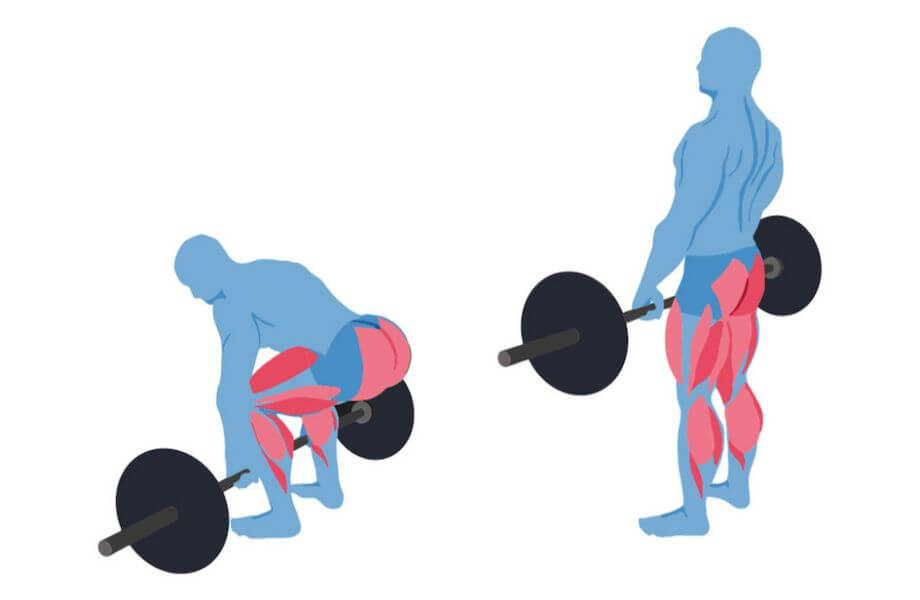
- Hamstrings: The main attraction on this one is those hams on the back of your thighs. Your hammies are responsible for extending your leg and movements like walking, running, jumping, and sprinting. They’ll be working their hardest during the stiff-leg deadlift.
- Lower back: Eliminating all knee flexion from the exercise means your quads get a breather and, instead, your lower back will bear the brunt. Your spinal erectors are responsible for maintaining a strong posture and stabilizing the weight as it rises.
- Glutes: Don’t count out your derriere; the glute muscles are responsible for hip flexion and extension, so they’re integral to producing power during the hip hinge.
- Adductors: Your hip adductors won’t work as hard as the prime movers here, but they do assist in hip flexion, hip extension, and pelvis stabilization.
- Upper back: Once you reach lockout, you’ll need your upper-body muscles, including the traps, lats, and core, to keep your posture strong and stabilize the weight.
RELATED: The Deadlift: Muscles Worked
Stiff-Leg Deadlift: Final Thoughts
We’re dead serious when we say you should consider adding the stiff-leg deadlift into your workout routine. Sure, the conventional deadlift is a beast of a lift, but you may leave gains on the table if you’re not switching things up.
The stiff-leg deadlift:
- Increases hamstring and lower back activation
- Helps improve lower-body mobility and flexibility
- Adds exercise diversity to your strength training program
- May help alleviate low back pain by strengthening the lumbar
- May translate to improved deadlift (and other weightlifting) performance
So, don’t leave those gains dead in the water. Show a stiff upper lip and add the stiff-leg deadlift to your routine today!
Stiff-Leg Deadlift: FAQs
What is the difference between RDL and stiff-leg deadlift?
“Many people confuse the Romanian deadlift and stiff-leg deadlift since both exercises involve stiff legs, but they are two different exercises,” says Kate Meier, NASM-CPT, USAW-L1, CF-L1, and GGR director of fitness content. “The stiff-leg deadlift, like the regular deadlift, involves lifting the barbell from the floor, while the RDL involves starting from a standing position and hinging forward, holding the weight in the air the entire time.”
RELATED: 16 Best Deadlift Variations
How much should I stiff-leg deadlift?
Most lifters can lift heavier when doing the regular deadlift, but that doesn’t mean the stiff-leg deadlift is substantially weaker. We’d recommend starting light and adding more weight as you gain proficiency with the form.
Once you get your bearings, expect to lift in the ballpark of 75% to 80% of your regular deadlift one-rep max.
RELATED: The 5/3/1 Workout
Is stiff-leg deadlift better than conventional deadlift?
We’re exercise-inclusive at GGR, meaning we can find a reason to use almost every exercise. The conventional and stiff-leg deadlifts are no exception, so we highly recommend both.
That said, the regular deadlift gets an edge in terms of offering greater loading potential and targeting more muscle groups throughout the body. We’d recommend the stiff-leg deadlift to those lifters working to build bigger and stronger hamstrings or trying to isolate their lower back.
References
- McAllister MJ, Hammond KG, Schilling BK, Ferreria LC, Reed JP, Weiss LW. Muscle activation during various hamstring exercises. J Strength Cond Res. 2014;28(6):1573-1580. doi:10.1519/JSC.0000000000000302
- Coratella G, Tornatore G, Longo S, Esposito F, Cè E. An Electromyographic Analysis of Romanian, Step-Romanian, and Stiff-Leg Deadlift: Implication for Resistance Training. Int J Environ Res Public Health. 2022;19(3):1903. Published 2022 Feb 8. doi:10.3390/ijerph19031903
- Baz-Valle E, Schoenfeld BJ, Torres-Unda J, Santos-Concejero J, Balsalobre-Fernández C. The effects of exercise variation in muscle thickness, maximal strength and motivation in resistance trained men. PLoS One. 2019;14(12):e0226989. Published 2019 Dec 27. doi:10.1371/journal.pone.0226989
- Low Back Pain. World Health Organization. Accessed May 29, 2024. https://www.who.int/news-room/fact-sheets/detail/low-back-pain.
- Fischer SC, Calley DQ, Hollman JH. Effect of an Exercise Program That Includes Deadlifts on Low Back Pain. J Sport Rehabil. 2021;30(4):672-675. Published 2021 Feb 24. doi:10.1123/jsr.2020-0324
Further reading

In our NordicTrack X7i review, we take a look at the specs of this now-discontinued treadmill. Read more

Our list of pull-up variations provides alternatives to the classic bodyweight exercise that even beginners can tackle. Check them out right here! Read more

This app combines yoga and HIIT training to help level up your fitness, but is it worth the expensive monthly fee? Find out in our Asana Rebel review. Read more

It’s great for building muscle, but does creatine help lose weight? A registered dietitian explains whether it can help with fat loss. Slug: does-creatine-help-lose-weight Read more

